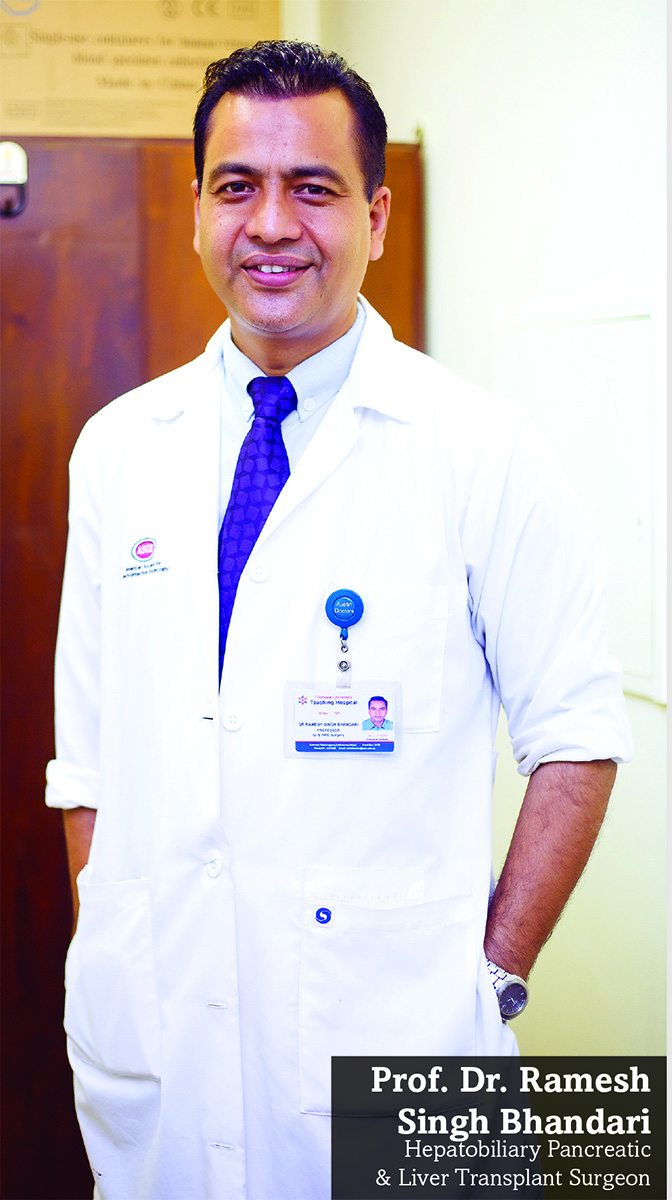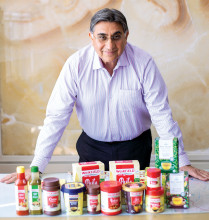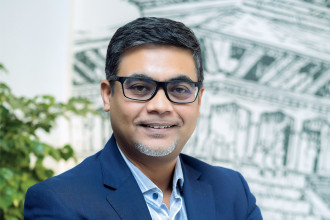
Born in Baitadi, Prof. Dr. Ramesh Singh Bhandari completed his schooling from VS Niketan School and went on to study at Birendra Sainik Awasiya Maha Vidyalaya. He obtained his MBBS degree from B.P. Koirala Institute of Health Science (BPKIHS), Dharan in 2001 and in between worked as Medical Officer for two years at the Kathmandu Medical College and BHKIHS. Dr. Bhandari joined Tribhuvan University Teaching Hospital (TUTH) for MS studies in general surgery which he completed in 2006 after which he became a faculty member at TUTH. In between, he also completed M.Ch in surgical gastroenterology.
In January 2015, Dr. Bhandari completed the two year fellowship training in Hepatectomy Pancreatoduodenectomy (HPD) transplant; one year each from Alfred Hospital and Austin Hospital in Melbourne, Australia. After he came back to Nepal, he focused on Hepatopancreatobiliary and setting of liver transplant programme. Finally in June 2019, he and his team were able to conduct TUTH’s first living donor liver transplantation.
Dibesh Dangol of B360 met with Dr. Bhandari to learn about the variables of liver transplant surgery, technological advancements, and his views regarding the status of health services in Nepal. Excerpts:
Shahid Dharma Bhakta National Transplant Centre was the first hospital to offer liver transplant surgery and TUTH became the second hospital in July 2018. Apart from these hospitals, are there other hospitals offering liver transplant surgeries? How can this service be made available to people outside Kathmandu valley?
Though Shahid Dharma Bhakta National Transplant Centre started liver transplant surgeries two years earlier than us, I have been working on this programme for a long time. My concern has always been that once the transplant programme starts, it should not stop. The challenge to start is there, but the bigger challenge is to give it continuity and sustain the programme.
Besides these two hospitals, I don’t see any other hospitals starting liver transplant programme immediately though I have heard that some other medical hospitals have also got licences for the same. Hopefully, in the future, other hospitals will start liver transplant programme, but it will surely take some time.
Whenever there is an initialisation in heath sector, queries regarding how or when the services will be available outside Kathmandu valley always arise. According to me, it’s too early to start discussing on this. In the initial stage, it’s important to make sure new programmes like liver transplant gets established in a few big hospitals in the valley itself because these hospitals are easily accessible to all Nepalis. Doing so also means more doctors will be trained and experienced in Nepal itself and after some period the programme can spread to hospitals outside of Kathmandu valley.
Liver transplant surgeries are not like any other normal surgical procedures which can spread to other hospitals easily. In Australia, only five hospitals offer liver transplant because the programme is expensive and huge investment and highly certified experienced personnel are needed to operate this programme.
If someone from outside Kathmandu Valley wants to get liver transplant surgery, it’s pretty easy to get connected with us. We run occupational medical clinics every Sunday and Wednesday at TUTH where patients can come and meet me or my team members.
How many patients come for liver transplant surgery in a year? What is the global success rate and the success rate in Nepal?
We don’t have exact data regarding this but we can give a rough estimation. In big hospitals like TUTH, gastro-pathology reports shows that 2-3 people come for check-up every day for liver and gastro-related diseases which mean 15-20 people show up in a week and accordingly more than a thousand people in a year. Amongst these 1000+ people, 10-15% or 100-200 patients might need to have liver transplant surgeries every year. Nowadays, most patients who can afford or spend more are going to India for this surgery. Our main target is to provide this service to Nepalis who can’t afford to go abroad for the surgery.
It’s too early to talk about liver transplant surgery success rate here in Nepal as only three surgeries have been done; two at Shahid Dharma Bhakta National Transplant Centre and one at TUTH, all of which have been successful.
In terms of global success rate and survival statistics, it’s very high. More than 95% have survived for one year, 70-80% for five years and similarly 60-70% for ten years. It also depends upon the centres, and some of the Australian centres have been able to achieve high outcomes.
Who is a good candidate for the transplant?
There are two parties: recipient and donor to be concerned first in terms of knowing a good candidate for the transplant. The recipients are liver disease patients and have developed cirrhosis. So, whatever the cause of the disease, if it is a chronic disease they ultimately develop cirrhosis. The cirrhosis has been differentiated in four stages. Stage 1 means first sign of liver damage i.e. inflammation is seen, in Stage 2 fibrosis or scarring in liver develops, cirrhosis or severe scarring is seen in Stage 3 and Stage 4 means liver failure. Patients who are in the later stages of cirrhosis need liver transplant. Recipients can be patients from very young age to the age of 65. People above the age of 65 aren’t encouraged for transplant as it is a big surgery and there is a lot of risks involved when doing surgery for people above that age.
According to the Transplantation Regulations, before 2016 amendment, the donors should be a blood relation of the recipient. But in 2016, the Regulation was amended and expansion of donors was done. According to the new regulation there should be some proof of relation between the recipient and the donor, s/he should be healthy, not suffering from any type of chronic diseases, must be between the age of 18-55 years, shouldn’t have history of abdominal surgeries and taking long term medications. Apart from these, the donor will also have to go through medical procedures and investigations to check whether s/he can be a donor or not because if wrongly done, both the recipient and donor’s lives can be in danger.
Altruistic donation meaning donating to a complete stranger which isn’t permitted in Nepal, but cadaveric donation meaning organ donation from brain dead declared patients is allowed if the cadaveric patient’s family agrees and medical investigations between the recipient and cadaveric donor match.
What is the tentative cost for liver transplant in Nepal and in foreign countries?
Liver transplant surgery, even it is available here, is one of the most expensive transplant surgeries. Until we do few numbers of these types of cases I will not be able to provide the exact or tentative cost but we have assumed it will cost around Rs. 25 lakhs. Our previous patient spent around Rs. 27 lakhs. So overall, I think the cost will be between Rs. 25-30 lakhs for the surgery.
In foreign countries, the cost will obviously be expensive than here as expenses like travel costs, lodging, food and miscellaneous expenses have to be added to the surgery cost. I think the cost might be almost the double of what it costs here in Nepal.
Why are gastro-intestinal diseases common in Nepal?
Gastro-intestinal diseases are common all around the world and not just in Nepal. These days the people are more concerned and they come to hospitals due to which we are detecting more diseases. 95% of the diseases I deal with are regarding GI system and not diseases like diarrhoea and other minor or curable diseases. Most of the diseases I deal with are gastro-intestinal cancer, liver cancer, pancreatic cancer, intestinal cancer and some chronic diseases related to liver and pancreas. There are many reasons why people have these kinds of diseases; like genetic inheritance, unaware of the causes, environmental risks or involvement in bad habits like alcohol, smoking and drugs.
Most of the above mentioned diseases aren’t preventable, unless it is related to bad habits or infections, and needs to be cured in time. So, timely visits to physician are necessary. Whenever symptoms of such diseases arise, people should go to a hospital and get it checked-up. If people do so in earlier stages of the diseases, these diseases are curable. It is also important for people to keep themselves fit and healthy by exercising and eating nutritional balanced foods.
What are technological advancements happening around the world and in Nepal in the medical field? Do Nepali doctors have the requisite expertise to match and use such technologies?
Laparoscopic surgeries are happening all over the world. We are also doing that but the technologies are yet to be advanced in Nepal and the scale is very minimal. Robotic surgeries are also another technological advancement. These surgeries have also become available in India but are highly expensive. Treatments of most cancers are also available now. Liver transplant programmes have been well established in India and Pakistan and is in developing phase in other South Asian countries like Bangladesh, Sri Lanka and Nepal.
Yes, Nepali doctors do have the expertise and are capable of using the latest technologies though the numbers are minimal. The doctors have and are going overseas to get trainings in the latest medical technologies and this trend has started in Nepal.
What is the status of health services and access to health services by all Nepalis? What are the major reforms needed in the health sector according to you?
Most of the big surgeries and facilities are limited to the big hospitals which are mostly inside Kathmandu valley and other major cities of Nepal. Though it is a huge challenge, common surgical procedures and treatment for common diseases should be at least available to the general public all over the country. I think even the district and regional hospitals are getting developed and more expert doctors are being produced within the country or through studies abroad which is admirable. In the long run they will surely uplift the heath status of the country.
At the moment, there is a crisis in the health sector, but in five to ten years most of these common problems will be taken care of. The development of health sector in Nepal is very admirable. We can’t and shouldn’t expect everything to happen all at once. It’s not really reform, but the one thing that needs to happen in the health sector is to have a healthy environment and good payment system for doctors and heath workers. If done so, many experienced Nepali doctors working in foreign countries might come back to Nepal to offer their expertise and services which will benefit both the country and the general public.






